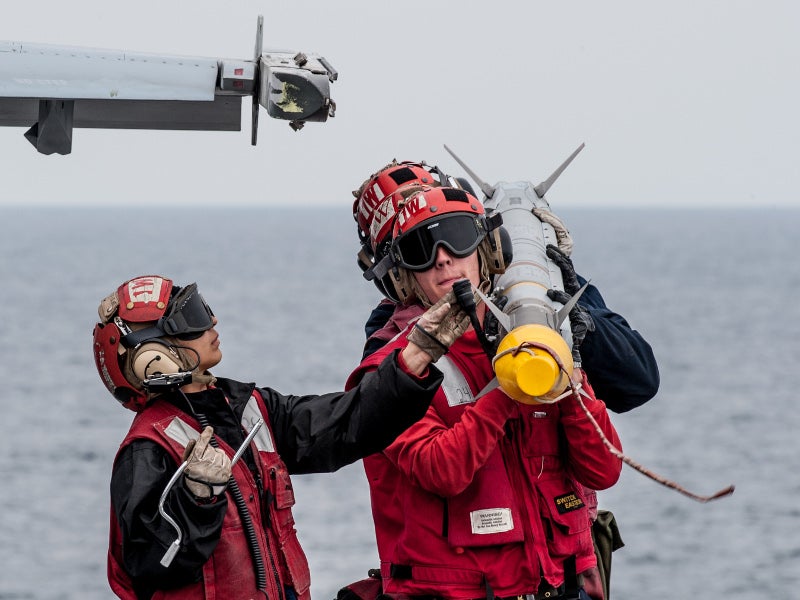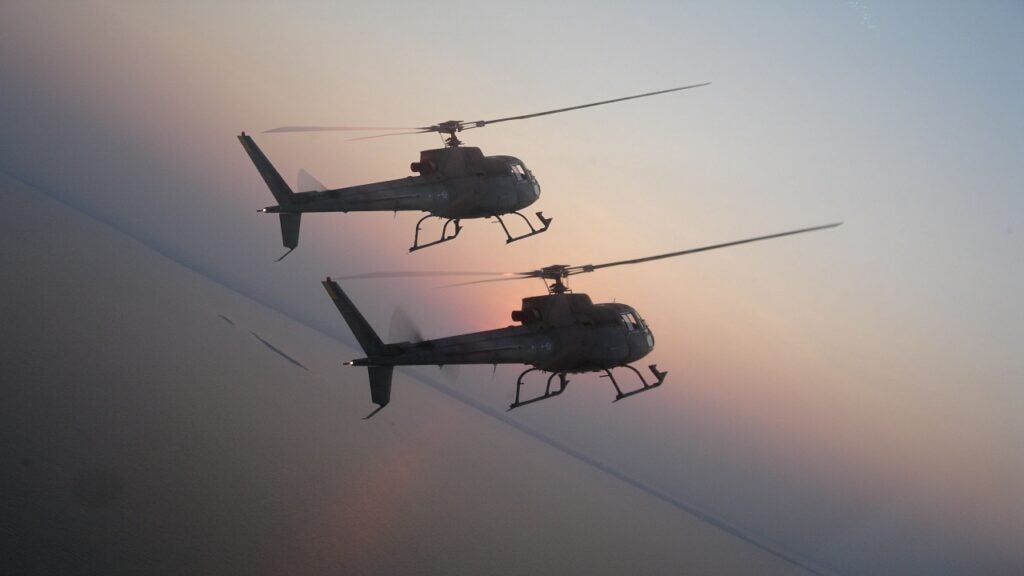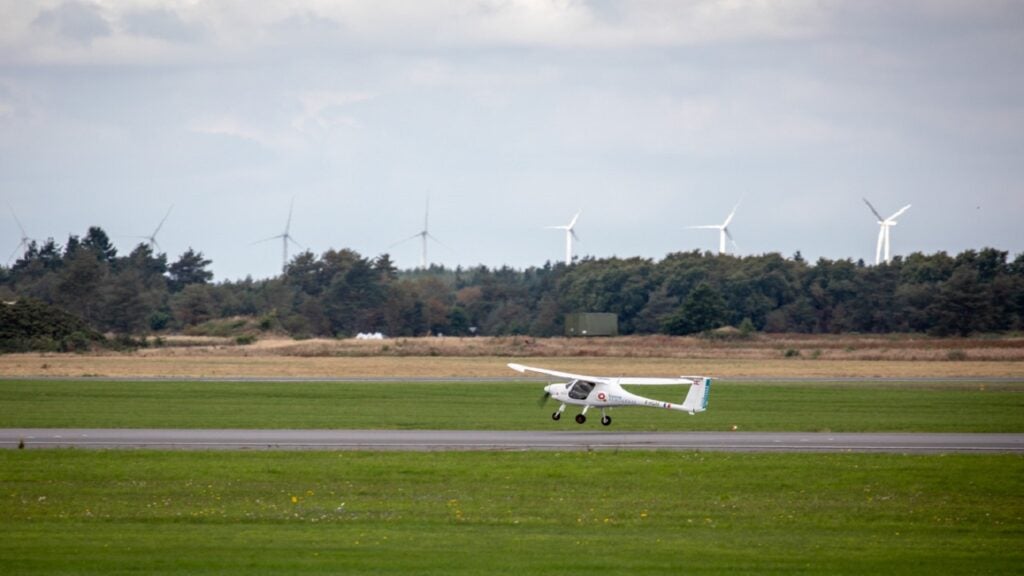
AIM-9X belongs to the family of AIM-9 Sidewinder short-range missiles produced by Raytheon. It is an infrared air-to-air missile primarily developed for the US Air Force and the US Navy.
The AIM-9X Sidewinder missile is currently in service with more than 24 countries worldwide. It is supplied to Nato member countries and other US-allied nations.
In October 2012, the Netherlands requested 28 AIM-9X-2 Sidewinder Block II missiles.
Morocco and the US exercised a letter of offer and acceptance (LOA) for AIM-9X Block II missiles in July 2012.
The AIM-9X Block II missile was fired from the National Advanced Surface-to-Air Missile System (NASAMS) launcher for the first time in May 2019.
AIM-9X Sidewinder missile development
Development of the AIM-9X began under a joint US Navy and USAF programme. The AIM-9X acquisition programme focuses on fulfilling the urgent requirements of aircraft and troops by providing a next-generation Sidewinder to replace the AIM-9M missile.
The launch of the first AIM-9X missile took place in March 1999. Between 1999 and 2000, 13 separation and control test launches and 12 guided launches were performed from the US Navy’s F/A-18 and USAF F-15 aircraft.
Raytheon received the first low-rate initial production contract for AIM-9X in November 2000. Initial operational capability (IOC) was achieved in November 2003, while full-rate production began in May 2004.
The AIM-9X Block II missile completed its first test firing in November 2008. Also known as AIM-9X-2, the missile is an upgraded variant with a lock-on-after-launch feature. AIM-9X Block II has a redesigned fuse and a unidirectional forward-quarter data-link. The datalink enables it to engage upon targets even beyond visual range.
The full-rate production of the AIM-9X Sidewinder Block II infrared air-to-air missile began following the US Navy’s approval in September 2015.
Raytheon revealed plans to increase AIM-9X Sidewinder’s range by up to 60% in 2018.
Raytheon and the Royal Norwegian Air Force together conducted a flight test for AIM-9X Sidewinder Block II missiles from a National Advanced Surface-to-Air Missile System (NASAM) for the first time in May 2019. The missile engaged and destroyed its target during the flight test that was carried out at the Andoya Test Center in Norway.
Design features of AIM-9X Sidewinder
IM-9X incorporates an agile thrust, vector-controlled airframe. It uses a high-performance staring focal plane array sensor and integrates components such as rocket motor, warhead and fuse of AIM-9M. The digital design architecture of the missile can adapt enhancements for future requirements.
The missile has a length of 3m, a diameter of 12.7cm, a fin span of 44.4cm, a wingspan of 35.3cm and weighs approximately 85kg. It can carry a 9.36kg annular blast fragmentation warhead to a range of more than ten miles.
AIM-9X can be integrated with a wide range of aircraft, including E/A-18G, F/A-18C/D, F-15, F-15C, F/A-18E/F, F-15E, F-16, F-22, and F-35 models. The missile is compatible with the NASAM, LAU-7 and LAU-12X series launchers.
Guidance and navigation
The infrared (IR) homing guidance section performs tracking and guidance functions. The AIM-9X is a system-guided missile employing a mid-wave IR FPA seeker. The seeker, equipped with High Off-Boresight (HOBS), can be used with a helmet-mounted sight for wider attack envelope. It uses passive infrared (IR) energy for target acquisition and tracking. After the launch, the seeker follows the heat signature from the engines of the hostile aircraft.
The IR homing ensures the launch of the missile during the day/night and in electronic countermeasure (ECM) environment. The missile can engage targets in the near beyond visual range (NBVR) and within visual range (WVR) areas.
Propulsion
The propulsion for the AIM-9X contains a Mk 36 rocket motor integrating a thrust vector control package. The solid propulsion motor uses a reduced-smoke hydroxyl-terminated polybutadiene (HTPB) propellant. The cylindrical grain form and integrated control actuation system enhance the range and manoeuvrability of the missile.
AIM-9X orders and deliveries
Raytheon was awarded a $392.4m contract modification by the US Navy in March 2020 to produce and supply AIM-9X Sidewinder missiles, captive air training missiles, all up round tactical missiles, captive test missiles and other equipment. The contract is for production under Lot 20.
The company received a $151.4m contract to provide support for the sustainment of the AIM-9X Block II and Block II+ missiles of the US Navy and US Air Force along with 20 other countries.
The US Department of Defense awarded Raytheon a €379m ($434m) contract in December 2018 for procuring 766 modified AIM-9X Block II missiles for the US Navy, US Airforce, and the governments of UAE, South Korea, Qatar, Norway, and Israel. The contract also includes 160 AIM-9X Block II+ for its airforce and navy along with the governments of Australia, the Netherlands, and Israel.
The Belgian Air Force received a batch of AIM-9X-2 Sidewinder short-range missiles in January 2017.
In July 2016, Raytheon secured a $291m contract from the US Navy for the Lot 16 full-rate production of AIM-9X Block II missiles for the US Armed Forces, and the governments of Taiwan, Norway and Japan.
In March 2012, Raytheon received a $97m modification contract for the Lot 12 low-rate initial production of 19 and 120 AIM-9X Block II missiles for South Korea and Saudi Arabia respectively.
As of September 2012, Kuwait, Malaysia, Oman and Poland also made requests for the acquisition of AIM-9X-2 Sidewinder Block II missiles.
In December 2004, Raytheon received a $158m contract from the US Naval Air Systems Command for the production of 443 all-up-round AIM-9X missiles, 153 AIM-9X training missiles and associated equipment.



